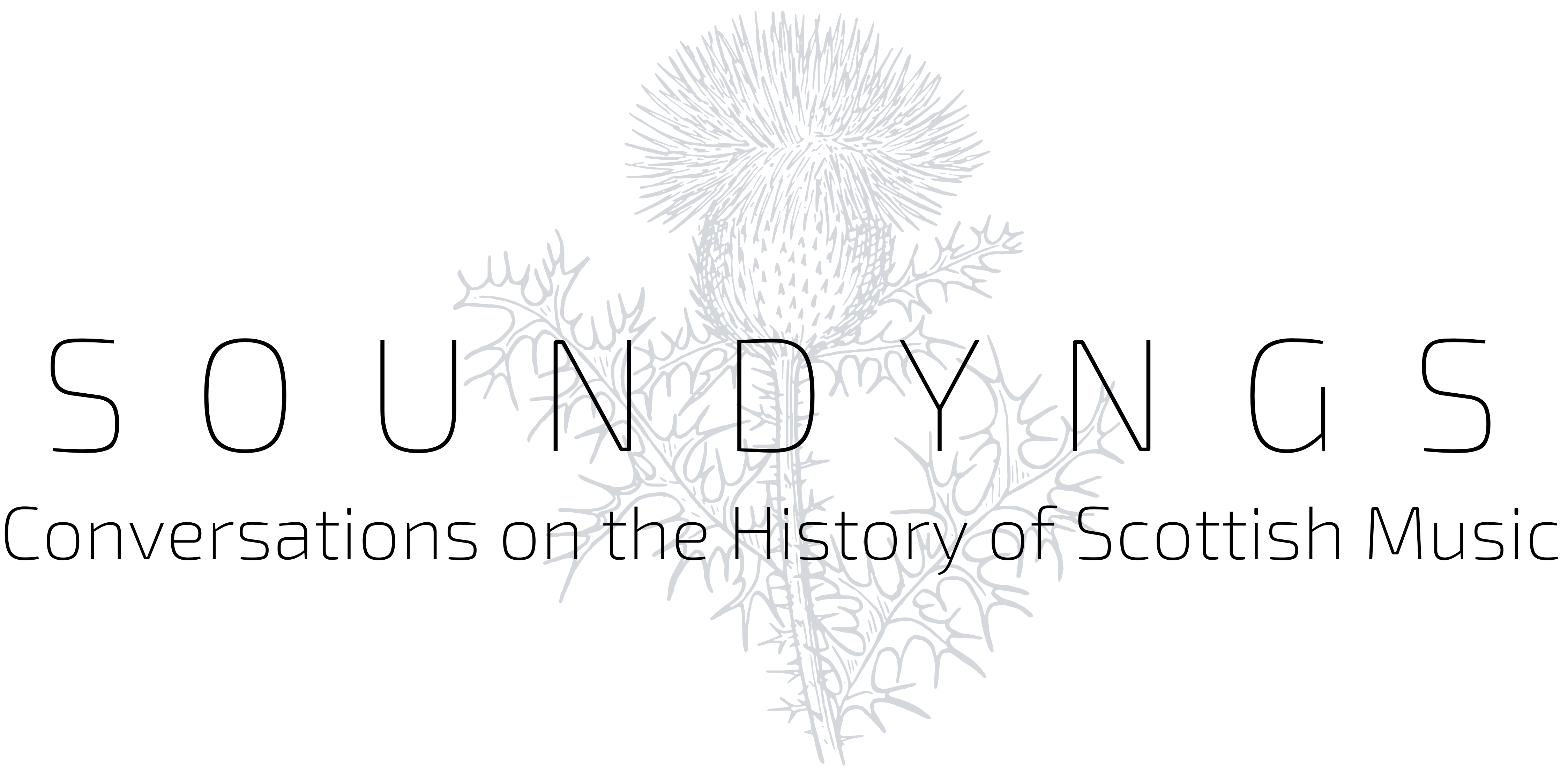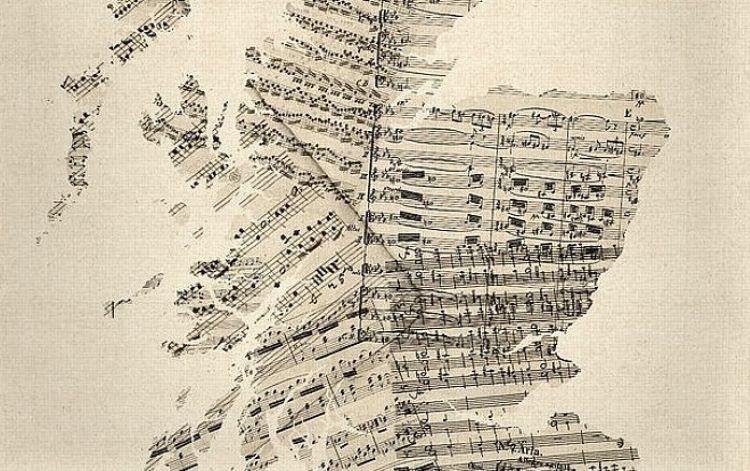While some songs from this new anthology were performed by Seamus Begg in October during the 2022 St Andrews Voices festival, COVID19 prevented well-known Scottish tenor and broadcaster Jamie MacDougall from being able to deliver the entire volume as originally planned. Now in full health and accompanied by pianist Scott Mitchell, MacDougall delivered all 22 songs on Friday 9th December in the University of St Andrews Laidlaw Music Centre. The songs include much-loved favourites by poets from Burns, Hogg and Dunbar, songs from all parts of Scotland from the Borders to Orkney and the Isles, and includes Gaelic as well as Scots texts. Work by emerging younger artists such as the Màiri a Callan sits alongside established contemporary Scottish composers from both the classical and folk/trad world, including Sir James MacMillan, Eddie McGuire and Mary-Anne Kennedy. Macdougall and Mitchell brought not only an extraordinary mix of humour and wit but also at times deep pathos; both these Scottish-based artists possess a profound knowledge of the how to communicate this repertoire. A further recording and print publication is due in 2023.
Where does this volume sit in the traditions of revision and renewal of Scottish song? The 18th century saw contemporary European chamber music fuse with traditional melodies to create a new style of ‘drawing room’ art music; in the 19th century, ‘traditional songs’ with romantic piano accompaniments were heard in domestic and concert contexts wherever the Scots diaspora roamed; in the 20th century, modernist piano accompaniments by Francis George Scott were hailed by the likes of Hugh MacDiarmid as forming a central pillar of a Scottish cultural renaissance, celebrating both music and languages of the nation. [1] Since MacDiarmid wrote, musical tradition and modern composition have not always collaborated easily, sometimes separated by ideological debates, sometimes by the practicalities of diverging performance practices.
This new songbook is aimed at experienced 21st century singers of art song, and reflects what project coordinator Christopher Bragg describes in the programme note from the launch as ‘a broad breadth of personal perspectives on a rugged landscape of multi-faceted musical tradition’. Lyrics include both Scots and Gaelic; songs include 20th century ‘folk music revival’ songs such as the 1967 pit-disaster ballad ‘Michael Colliery’ alongside older material from the 18th century Golden Age of national song; all are freshly and thoughtfully rearranged. To quote a central tenet of modernism, ‘made new’. Composers and arrangers straddle the art music/folk music divide: the volume aims to embrace the best of both traditions.
The anthology’s curation also highlights the 20th and 21st century importance of Scotland’s education sector in the circulation of Scottish art song, being as it is jointly managed by the University of St Andrews Music Centre and the St Andrews Voices Festival. It is sometimes forgotten that Francis George Scott, as well as being a composer, was first and foremost an educator, working at the Jordanhill teacher training college in Glasgow, and that alongside using traditional melodies and of course, Scots poems, to compose art songs, he was also concerned that school-teachers under his charge would be able to teach Scottish songs to children. Most Scots educated in Scotland in the 20th century would have encountered in the classroom collections such as the New Scottish Orpheus books, arranged by J Michael Diack, published by Patersons of Glasgow, which exported (as advertised on its title pages) to London, Australia, Canada, New Zealand and the USA, even if they might not at that stage have grappled with the often complex rearrangements of this material by Scott himself. But these amateur anthologies are the gateway to being able to listen to and appreciate more complex reworkings.
At University, too, anthologies of song used for community singing circulated melodies from the Scottish national repertoire with simple piano accompaniments. The regularly updated editions of the Scottish Students’ Song Book – whose covers invariably show a classical Orpheus in red academic garb – had its origins in a mid-1880s St Andrews initiative to publish songs loved by local students, and although that immediate project did not proceed, its leaders instead formed a wider network connecting the Student Representative Councils of St Andrews, Edinburgh, Aberdeen and Glasgow into a Scottish Students Song Book Committee. This body oversaw the first edition of many, which appeared in 1891, published by Bayley and Ferguson of Glasgow and London. These robust, often hard-back books were hugely popular; regular new editions appeared throughout the first decades of the 20th century, with regularly updated material and arrangements.[2] The oral traditions that inspired the mid-20th century Folk Song Revival brought a fresh burst of grass roots energy and a new political bite to the performance and circulation of Scottish melody, but its followers would have included many who had been raised on piano accompanied anthologies at school and University.
In the wake of the mid-century folk song revival, Cedric Thorpe Davie (Professor of Music at the University of St Andrews) and George McVicar (schools music advisor to Stirlingshire) co-edited and arranged The Oxford Scottish Songbook: Sixty Songs for Unison or Solo Singing with Piano (OUP, 1968), gathering up traditional songs with piano accompaniments, many by the editors, in an anthology aimed at ‘amateurs and professionals, children and adults’, for either solo singing or classroom use. This was revised in 1987 as The New Scottish Song Book by OUP and in 1991, was reprinted alongside a further volume with a more self-consciously Scottish branding: The Saltire Scottish Song Book, by the Prestonpans-based Hardie Press. The popularity of this later 20th century work was due in no small part to the efforts of the new team – McVicar now joined by George McPhee, John Rankin, Stuart Robertson and Frank Spedding – whose combined efforts promoted Scots song through educational networks such as the Scottish Amateur Music Association, ensuring this material was placed in the music bags of young singers all over the country and indeed beyond.
The St Andrews Scottish Songbook continues this tradition of education-led, although not ‘academic’, song anthologies. Designed for performance rather than study, these songs and their new arrangements are a glowing coal heaped upon a long-burning fire.
[1] Hugh Macdiarmid, ‘Francis George Scott’, Contemporary Scottish Studies, 11/9/25 (reprinted by Scottish Educational Journal, 1976)
[2] The archives of the Scottish Students’ Song Book Committee can be found in the University of Edinburgh Special Collections.
Further Reading:
- Scottish Song Book Project : for information about composers’ biographies, arrangements and translations as well as future publication details.

